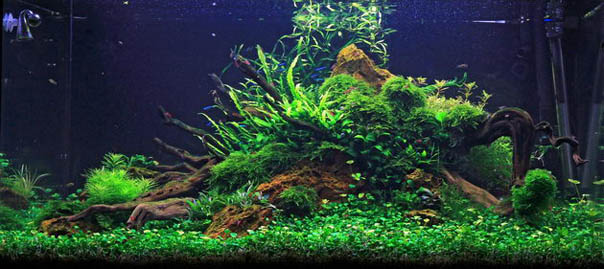Zinc (Zn)
Zinc is absorbed by plants as free Zn2+ cation or bound to chelators, when the pH is high it is also taken up as ZnOH+ ion.
This metal forms part of or is a cofactor in many enzymes involved in important metabolistic processes. For example, Cu/Zn-superoxide dismutase (Cu/Zn SOD, already mentioned in the chapter ?Copper?) protects the cellular membranes from damage by free oxygen radicals. In the cell plasma and in the chloroplasts, carboanhydrase (CA), which also contains zinc, regulates the reaction of CO2 and water to carbonic acid. This enzyme thus acts as a buffer and moreover causes an increase of the CO2 concentration in the chloroplasts. This raises the CO2 fixation rate of the enzyme RuBisCO during the dark reaction of photosynthesis. With the help of carboanhydrase, those waterplants able to make use of hydrogenous carbonate ions (HCO3-) as a source of carbon can convert hydrogenous carbonate to carbon dioxide, which in turn is fixed during the Calvin cycle.
Zinc plays a decisive role in stabilising the ribosomes and thus for the formation of proteins. As a part of RNA and DNA polymerases it is also crucial for the reproduction of RNA and DNA molecules and consequently for cell partition and protein synthesis.

Alcohol dehydrogenase (ADH), which also contains zinc, is very important for the detoxification of aquatic plants that usually live in oxygen-deprived environments in nature. Besides an efficient respirative energy generation from glucose involving oxygen, these plants can generate energy by alcoholic fermentation when oxygen is scarce. Alcohol dehydrogenase transforms the ethanole forming in this process into acetaldehyde (and vice versa). The most important energy transmitter, ATP, is formed with the help of the zinc-dependend enzyme hexokinase. Zinc also plays a role in the formation of the growth regulator beta indole acetic acid, which is counted among the auxines. If this falls below the required level, the plant reacts with small leaves and shortened internodes.
Zinc uptake is strongly dependent on the temperature, zinc deficiency symptoms are known from young maize plants during cold spring seasons. High zinc concentrations in the soil can lead to iron deficiencies in terrestrial plants because too much zinc may have a negative influence on the reduction of Fe3+ to Fe2+ on the roots.
The following Aqua Rebell fertilizers add zinc

